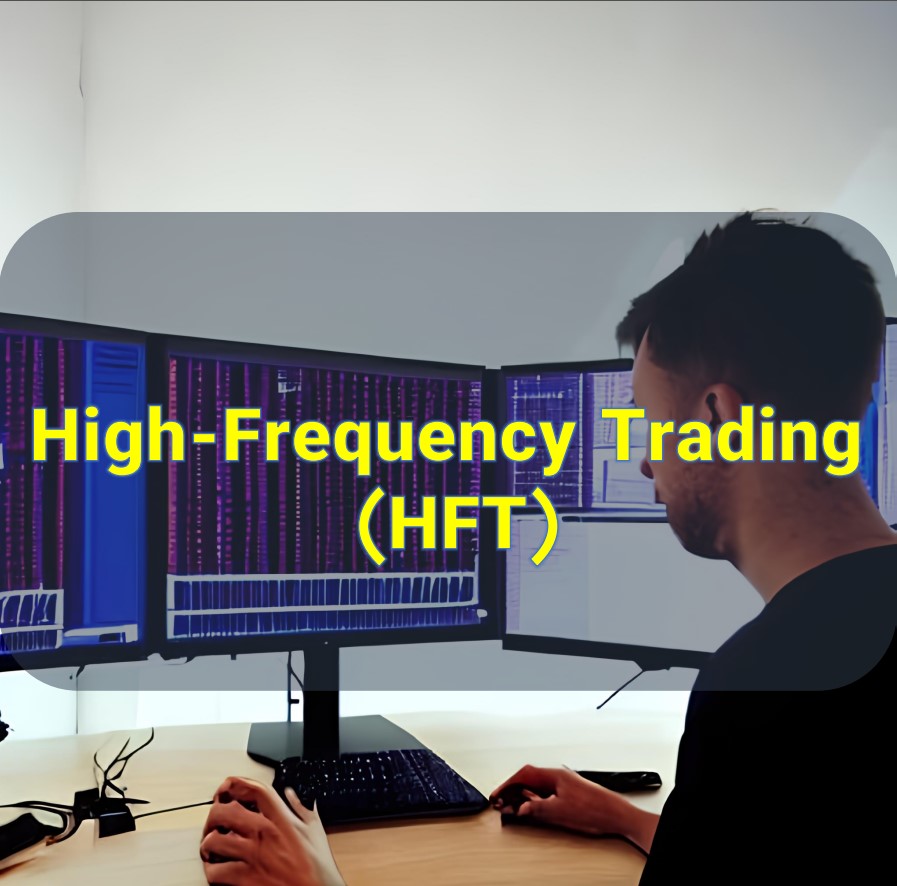Basic concepts in the forex market – The forex market, also known as the foreign exchange market or currency market, is a decentralized global market where currencies are bought and sold. It is the largest and most liquid financial market in the world, with daily trading volumes exceeding trillions of dollars. Here are some basic concepts to help you understand the forex market:
Currency pairs: In forex trading
currencies are always quoted in pairs. Each currency pair represents the exchange rate between two currencies. For example, EUR/USD represents the exchange rate between the Euro and the US Dollar. The first currency in the pair is the base currency, and the second currency is the quote currency.
Bid and ask price
The bid price is the price at which a trader can sell the base currency, while the ask price is the price at which a trader can buy the base currency. The difference between the bid and ask prices is known as the spread.
Long and short positions
In forex trading, you can take either a long position or a short position. A long position means buying a currency pair with the expectation that its value will rise. A short position means selling a currency pair with the expectation that its value will fall.
Leverage
Forex trading often involves the use of leverage, which allows traders to control larger positions with a smaller amount of capital. Leverage amplifies both potential profits and losses. Common leverage ratios in forex trading are 50:1, 100:1, or even higher, depending on the broker and the regulations in place.
Pips
A pip is the smallest unit of measurement in the forex market, and it represents the fourth decimal place in most currency pairs. For example, if the EUR/USD exchange rate moves from 1.2500 to 1.2501, it is a one-pip movement.
Fundamental analysis
Fundamental analysis involves evaluating economic, political, and social factors that can influence currency values. Factors such as interest rates, inflation, GDP growth, geopolitical events, and central bank policies are considered in fundamental analysis.
Technical analysis is one of the most important basic concepts in the forex market
Technical analysis involves studying historical price data, chart patterns, and various indicators to predict future price movements. Traders use tools like moving averages, support and resistance levels, and oscillators to identify trends and potential entry or exit points.
Market participants
The forex market comprises various participants, including banks, financial institutions, corporations, central banks, hedge funds, and individual traders. These participants engage in currency trading for various purposes, including speculation, hedging, international trade, and investment.
Market hours
The forex market operates 24 hours a day, five days a week. It begins with the opening of the Asian session in Tokyo, followed by the European session in London, and finally, the American session in New York. The market remains open continuously, with overlapping sessions leading to increased trading activity.
Risk management
Due to the high volatility in the forex market, risk management is crucial. Traders use various strategies to manage risk, including setting stop-loss orders to limit potential losses, using proper position sizing, diversifying their portfolios, and maintaining a disciplined approach to trading.
Market orders and pending orders
In forex trading, you can place different types of orders. A market order is an order to buy or sell a currency pair at the current market price. A pending order, on the other hand, is an order to buy or sell a currency pair at a specific price in the future. There are different types of pending orders, including limit orders (to buy below the current price or sell above the current price) and stop orders (to buy above the current price or sell below the current price).
Spread and liquidity
The spread is the difference between the bid and ask price of a currency pair. It represents the transaction cost in forex trading. Lower spreads are generally preferable as they reduce the cost of trading. Liquidity refers to the ease of buying or selling a currency pair without causing significant price movements. Major currency pairs, such as EUR/USD and USD/JPY, tend to have higher liquidity compared to exotic currency pairs.
Margin and margin call
Margin is the amount of money required to open and maintain a leveraged position in forex trading. It is a collateral that allows traders to control larger positions. Margin is expressed as a percentage of the total position size. However, trading on margin also involves the risk of margin calls. A margin call occurs when the account’s equity falls below the required margin level, and it prompts the trader to either deposit additional funds or close some positions to restore the required margin.
Currency correlation
Currency correlation refers to the relationship between different currency pairs. It measures how two currency pairs move in relation to each other. Positive correlation means the pairs move in the same direction, while negative correlation means they move in opposite directions. Understanding currency correlation can help traders diversify their portfolios and manage risk effectively.
Economic indicators
Economic indicators provide insights into the economic health of a country or region. They can have a significant impact on currency values. Some important economic indicators include GDP (Gross Domestic Product), CPI (Consumer Price Index), employment data (such as non-farm payrolls), interest rate decisions by central banks, and trade balances. Traders often monitor these indicators and their releases to anticipate potential market movements.
Carry trade
Carry trade is a strategy in which traders take advantage of interest rate differentials between currencies. In a carry trade, a trader borrows a currency with a low interest rate and uses it to buy a currency with a higher interest rate. By holding the position, the trader aims to earn the interest rate differential as profit.
Risk-on and risk-off sentiment
Risk-on and risk-off sentiment refer to the overall market sentiment and appetite for risk. In risk-on sentiment, traders are more willing to take on riskier investments and currencies, leading to a weaker demand for safe-haven currencies. Conversely, in risk-off sentiment, traders seek safer assets, resulting in increased demand for safe-haven currencies like the US Dollar, Japanese Yen, or Swiss Franc.
Forex brokers
Forex brokers are intermediaries that facilitate currency trading. They provide traders with access to the forex market and offer various trading platforms, tools, and services. It’s important to choose a reputable and regulated broker that suits your trading needs.
Volatility
Volatility refers to the degree of price fluctuations in the forex market. Higher volatility presents greater trading opportunities but also increases the risk. Traders may use strategies tailored to different volatility levels and adjust their risk management accordingly.
Slippage
Slippage occurs when the execution price of a trade differs from the expected price. It can happen during periods of high market volatility, low liquidity, or when placing trades during economic news releases. Slippage can be positive or negative and may affect trade profitability.
Forex analysis
Traders employ different types of analysis to make informed trading decisions. Fundamental analysis focuses on economic, political, and social factors that influence currency values. Technical analysis utilizes charts, patterns, and indicators to identify trends and potential entry and exit points. Sentiment analysis examines market sentiment and investor psychology to gauge market direction.
Demo trading
Demo trading involves practicing forex trading in a simulated environment without risking real money. It allows traders, particularly beginners, to familiarize themselves with trading platforms, test strategies, and gain experience before transitioning to live trading.
Trading plan
A trading plan is a set of rules and guidelines that define a trader’s approach to the market. It includes entry and exit strategies, risk management rules, preferred trading instruments, and overall trading goals. Following a trading plan can help maintain discipline and consistency in trading.
Economic calendar
An economic calendar is a tool that provides a schedule of upcoming economic events, such as central bank announcements, economic indicators, and political developments. Traders often refer to economic calendars to stay informed about potential market-moving events.
Carry costs and swaps
Carry costs, also known as swaps or rollover fees, are the costs or earnings associated with holding a position overnight. They arise from the difference in interest rates between the currencies in a currency pair. Depending on the direction of the trade and the interest rate differentials, a trader may either pay or receive swaps.
Risk-to-reward ratio
The risk-to-reward ratio is a measure used to assess the potential profitability of a trade compared to its potential loss. It represents the relationship between the amount of risk taken (stop-loss level) and the potential reward sought (take-profit level). A favorable risk-to-reward ratio is generally sought to ensure the potential reward outweighs the risk.
Order types
In addition to market orders and pending orders, forex traders can use various types of orders to execute their trades. These include stop-loss orders, which are used to limit potential losses by automatically closing a trade at a specified price; take-profit orders, which are used to lock in profits by automatically closing a trade at a specified price; and trailing stop orders, which adjust the stop-loss level as the trade moves in favor of the trader.
Forex liquidity providers
Liquidity providers are entities that offer prices and liquidity to forex brokers. They can be banks, financial institutions, or other large market participants. Liquidity providers ensure that there is sufficient liquidity in the market, allowing traders to enter and exit positions at desired prices.
Hedging
Hedging is a risk management strategy that involves opening trades to offset potential losses in other positions. Traders may use correlated currency pairs or other financial instruments to hedge their exposure. Hedging can help reduce risk but also limits potential profits.
Forex signals
Forex signals are trade recommendations or alerts provided by professional traders or automated systems. These signals suggest potential entry and exit points in the market based on their analysis. Traders can subscribe to forex signal services to receive real-time trade ideas and insights.
Scalping, day trading, and swing trading
These are different trading styles in the forex market. Scalping involves making quick trades to capture small price movements, often aiming for small profits on multiple trades. Day trading involves opening and closing trades within the same day, aiming to take advantage of short-term price fluctuations. Swing trading involves holding positions for a few days to weeks, capturing larger price movements.
Backtesting
Backtesting is a process in which traders test their trading strategies using historical market data to evaluate their effectiveness. By simulating trades based on past data, traders can assess the profitability and reliability of their strategies before using them in live trading.
Margin call and stop-out level
A margin call occurs when the account’s equity falls below a certain threshold set by the broker. If a margin call is triggered, the broker may require the trader to deposit additional funds or close positions to maintain the required margin. The stop-out level is the point at which the broker automatically closes the trader’s positions to prevent further losses when the account’s equity reaches a specified level.
Currency intervention
Currency intervention, also known as central bank intervention, occurs when a central bank takes action in the forex market to influence the value of its currency. Central banks may intervene to stabilize the currency, manage inflation, or address economic imbalances. Intervention can involve buying or selling currencies to impact their exchange rates.
Forex regulatory bodies
Forex trading is regulated by various regulatory bodies worldwide to ensure fair and transparent trading practices and protect traders. Examples of regulatory bodies include the U.S. Commodity Futures Trading Commission (CFTC), the Financial Conduct Authority (FCA) in the United Kingdom, and the Australian Securities and Investments Commission (ASIC).
Market sentiment
Market sentiment refers to the overall attitude or perception of traders and investors towards the forex market. It can be influenced by economic data, geopolitical events, and other factors. Positive market sentiment generally leads to bullish behavior, while negative sentiment can result in bearish behavior.
Order book
The order book displays all the buy and sell orders for a particular currency pair at different price levels. It provides information about the market depth and can help traders gauge the supply and demand dynamics in the market.
Liquidity pools
Liquidity pools are platforms or networks that bring together buyers and sellers to facilitate trading. They aggregate liquidity from various sources, such as banks, brokers, and other market participants, to provide traders with access to deep liquidity and competitive pricing.
Carry currency
A carry currency is a currency with a higher interest rate compared to the currency it is paired with. Traders may invest in carry currencies to earn interest differentials while holding the position. Popular carry currencies have historically included the Australian Dollar (AUD), New Zealand Dollar (NZD), and some emerging market currencies.
High-frequency trading (HFT)
High-frequency trading refers to the use of advanced algorithms and computer systems to execute a large number of trades within extremely short time frames. HFT aims to exploit small price discrepancies and market inefficiencies. It is typically employed by institutional investors and hedge funds.
Risk appetite
Risk appetite refers to an individual trader’s or investor’s willingness to take on risk in pursuit of potential returns. Some traders have a higher risk appetite and may be more inclined to engage in aggressive trading strategies, while others have a lower risk appetite and prioritize capital preservation.
Economic indicators
Economic indicators are statistical data points that provide insights into the economic performance of a country or region. They can include GDP growth, inflation rates, employment figures, manufacturing data, and consumer sentiment. Traders closely monitor these indicators as they can significantly impact currency valuations.
Fundamental vs. technical analysis
Fundamental analysis involves assessing economic, political, and social factors to determine the intrinsic value of a currency. It focuses on macroeconomic indicators and news events. In contrast, technical analysis relies on historical price data, chart patterns, and indicators to identify trends and make trading decisions.
Carry trade unwind
A carry trade unwind occurs when traders and investors start selling or unwinding their positions in carry trades due to a change in market conditions or a shift in sentiment. This can lead to a sudden reversal in the exchange rates of carry currencies as traders exit their positions.
Black swan events
Black swan events refer to rare and unexpected events that have a severe impact on the financial markets. These events are often unpredictable and can cause significant volatility and disruption. Examples of black swan events include major geopolitical crises, natural disasters, or unexpected economic shocks.
Remember, the forex market is dynamic and influenced by various factors. Traders should stay informed, continuously adapt their strategies, and manage risk effectively to navigate the market successfully.
These additional concepts should further enhance your understanding of the forex market. Remember that forex trading involves risks, and it is essential to continue learning, stay informed about market developments, and adapt your strategies accordingly.







